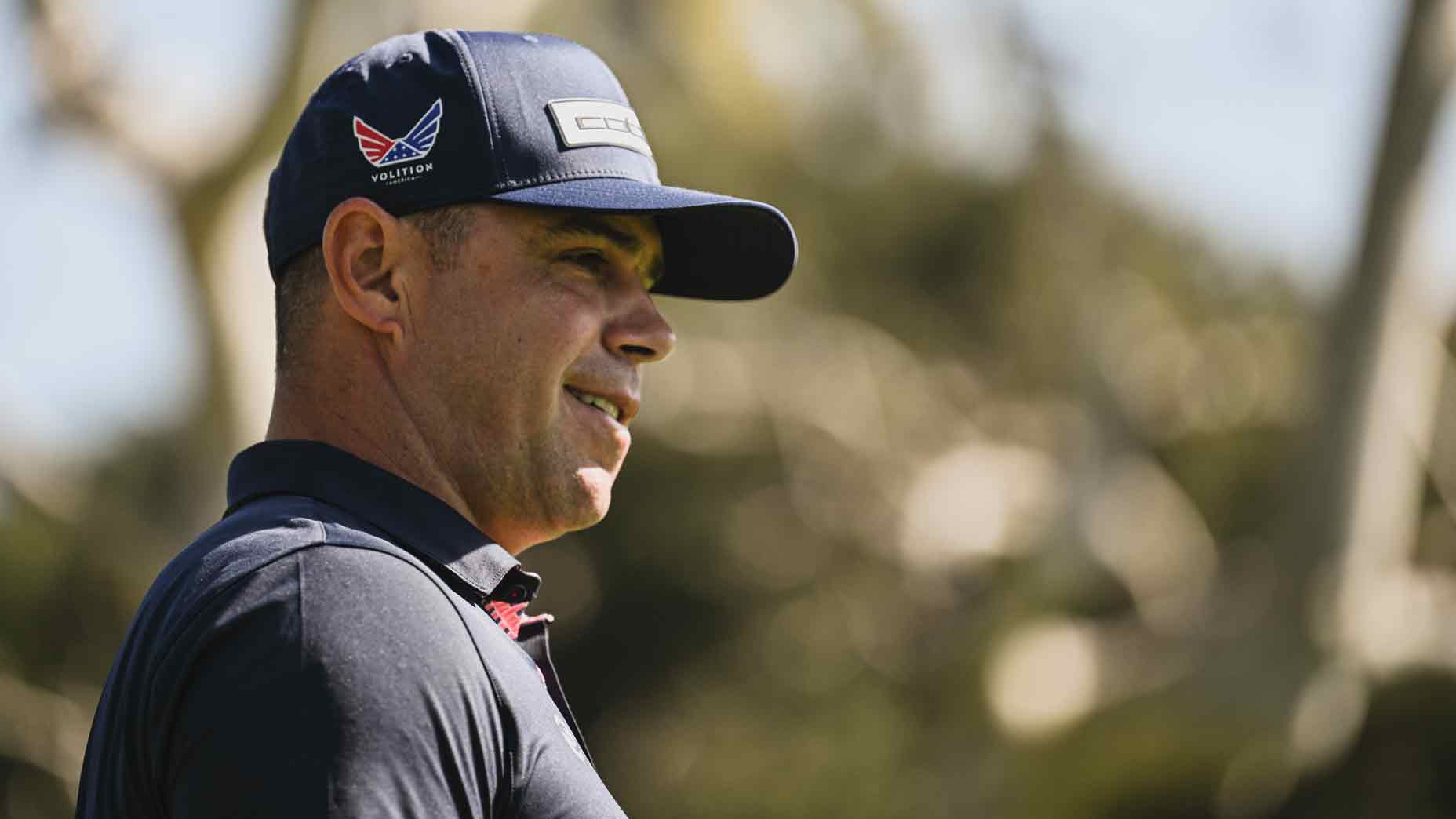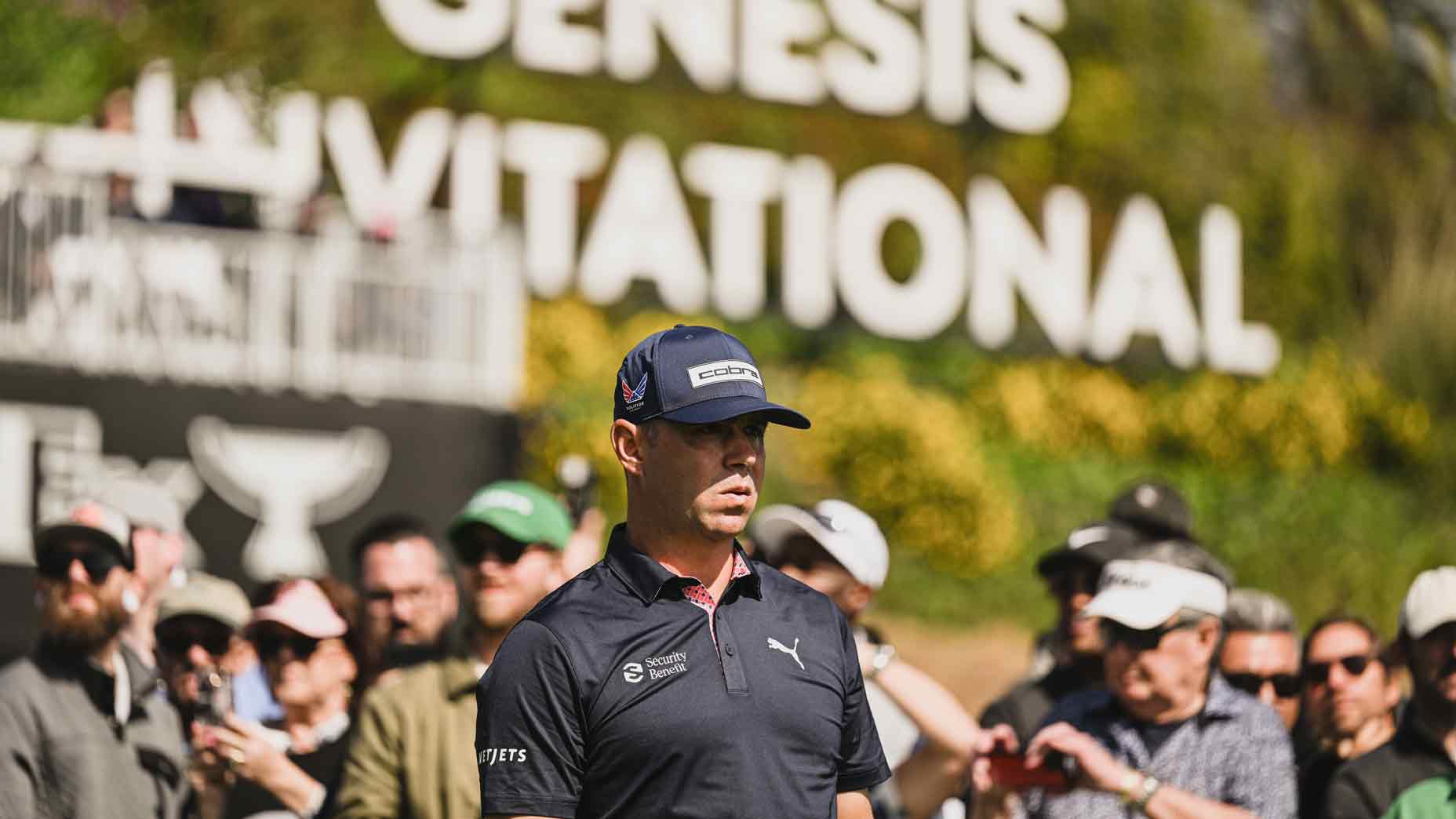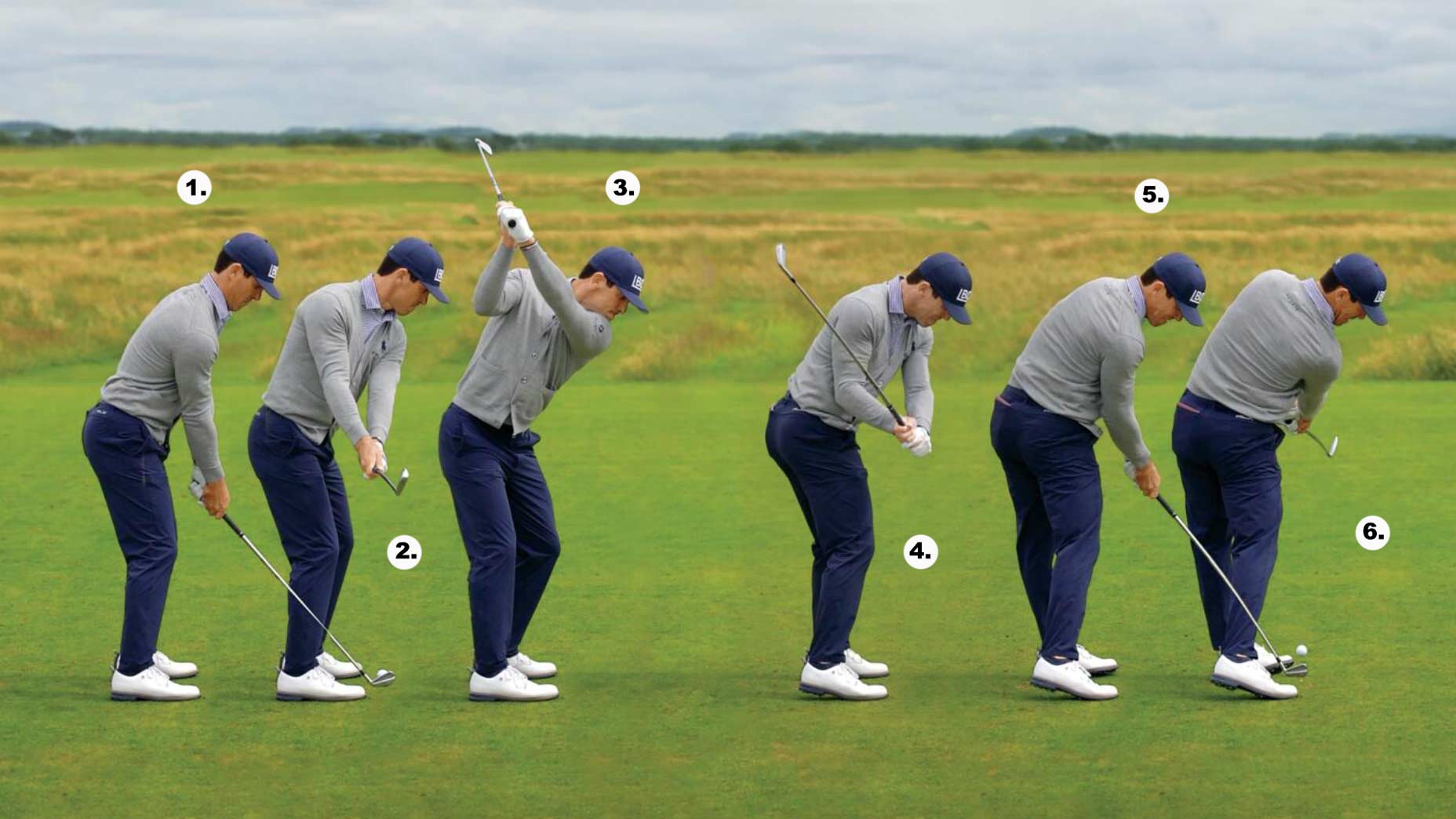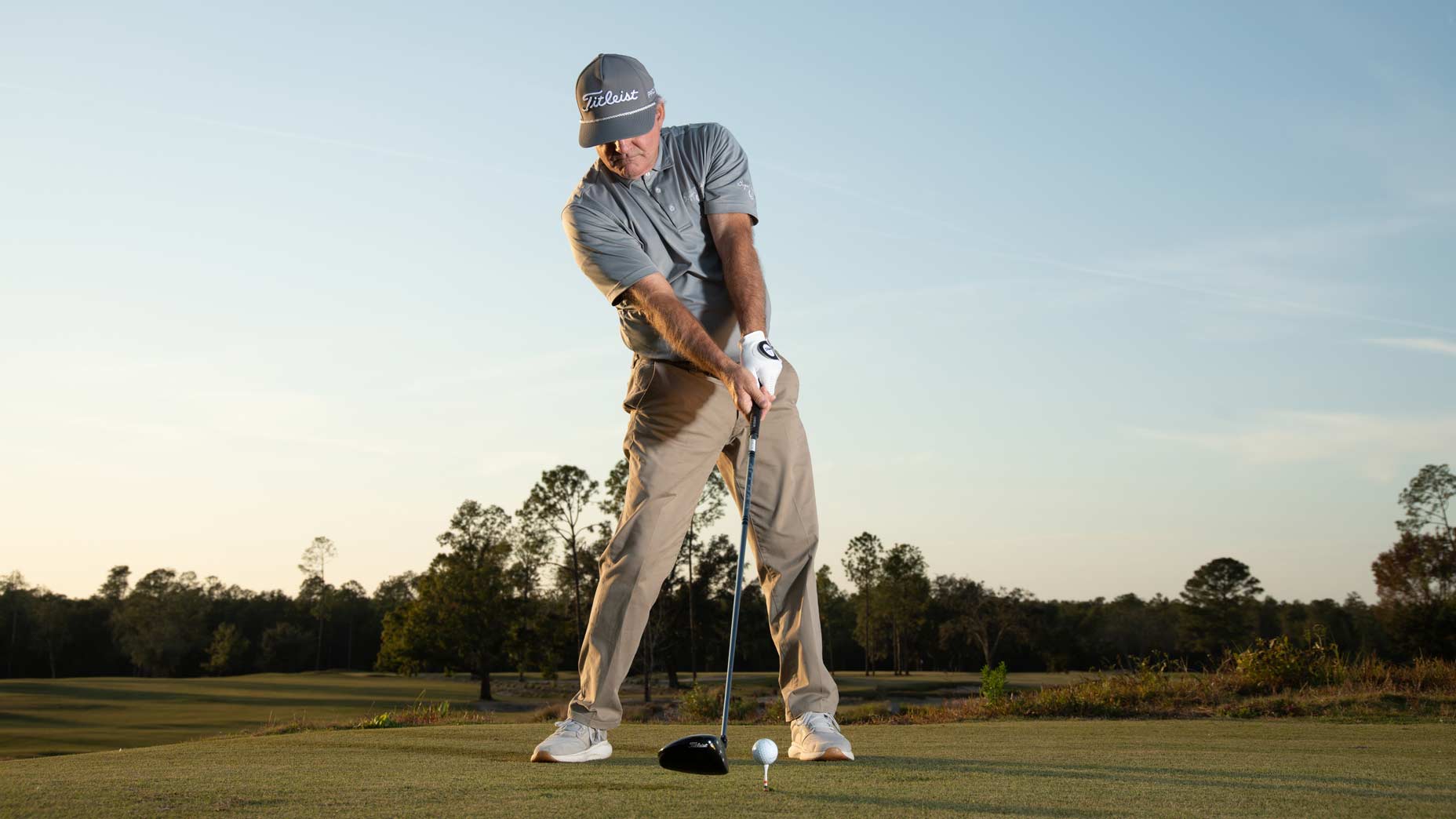PACIFIC PALISADES, Calif. — Gary Woodland couldn’t sleep.
It was the week of the 2023 Memorial Tournament, and he was lying in bed. The clock read 1 a.m. Woodland was due at Muirfield Village for his tee time later that morning, but he didn’t care. A sudden jolt had woken him from his slumber. He was grabbing the bed sheets, convinced he was dying.
Woodland considers himself an optimistic person by nature, but he couldn’t shake this. Each day, he feared death. The anxiety was crippling.
“I was very fear-driven,” Woodland said earlier this year from the Sony Open. “[It] didn’t matter if I was driving a car, on an airplane, I thought everything was going to kill me.”
The fear was the crippling, but it wasn’t the only symptom. Woodland’s hands were shaking. He didn’t have an appetite. He was riddled by chills and sapped of energy. He needed help.
Woodland’s doctor ordered an MRI, and the results were troubling. They found a lesion on his brain.
“Looked like a tumor on my brain,” he said. “The lesion in my brain sat on the part of my brain that controls fear and anxiety.”
Doctors ordered him onto seizure medication. The meds stopped the midnight jolts, but did little to reduce his anxiety. He continued playing on Tour — albeit not up to his typical standard — for the remainder of the 2023 season, but he was far from his normal self.
Standing over putts, he’d lose focus. He’d forget what club he was hitting as he went through his pre-shot routine. His best finish all summer was a T14 finish at the Quail Hollow. Walking away from the final event of the regular season, his caddie, Brennan Little, took him aside and had a candid talk with his boss.
“[He said], ‘You can’t play this way,'” Woodland recalled. “‘You got to go get help. You got to get fixed.'”
The following week, he went to see a specialist in Miami. On Sept. 18, he underwent surgery to have the lesion removed.
Doctors cut a baseball-sized hole in the side of his head and removed as much of the lesion as they could. There was a risk Woodland would come out of the surgery paralyzed on the left side of his body, but the surgery was a success. After two nights in the ICU, Woodland walked out of the hospital under his own power.
“They brought a wheelchair to the ICU room and I said, ‘I’m sorry, I walked in this place and I’m walking out,'” he said. “I got out of bed and I walked straight to my car.”
The anxiety immediately subsided, but there was a long road to recovery ahead — to mention nothing of Woodland’s intention of getting back in playing shape. He installed a PuttView green in his dining room and began rolling putts two days after surgery. Doctors told him he wouldn’t be able to hit balls until four-to-six weeks after surgery, but Woodland was restless. After two weeks, he snuck into his backyard with a wedge in his hand.
“I wasn’t supposed to be outside — I could hide out there — nobody could see me and I could chip in my backyard probably a little quicker than I was supposed to be,” he said with a smile. “Two weeks after surgery I took a little swing into a net in the backyard. Almost fell over, but I hit it.”
Four weeks post-surgery, Woodland was officially cleared to hit balls. He wasn’t yet allowed to drive, but he could play golf. His dad shuttled him from home to the course, and Woodland got to work.
The early returns were…not great. He played so poorly during his first nine-hole round that he immediately booked a flight to Las Vegas to see his coach, Butch Harmon. The teaching legend assured him he had nothing to worry about — regaining his previous form would take time, and Woodland was on the correct path.

Woodland’s biggest obstacle in regaining form thus far has come in the form of enthusiasm. Not a lack of it, but rather too much. He’s only five months post-op, so there are still residual side effects. Sometimes, Little will send him home to rest if he feels something is off.
“It’s hard for me,” Woodland said. “I want to get out and work.”
Communication from his entire team has been integral in his comeback bid. There are still days when Woodland doesn’t feel like himself. When they pop up, being honest and communicative is key.
As much as Woodland would love to camp out on the range and beat balls until his previous form returns, that’s just not an option. There are good days and bad, and when the “irritable, moody, not-all-there” Woodland emerges, it’s important he take the day off.
“When that happens, I’ve got to get into a dark room,” he said. “Really, concussion protocol more than anything. Turn the lights off, no noise.”
Woodland is still trying to find that magic of old — the magic that guided him to four victories and a U.S. Open title. Through three starts in 2024, he’s yet to make a cut. His scoring average is 71.7, and he’s losing strokes in every major statistical category. But there is hope yet.
After a missed cut at the WM Phoenix Open, Woodland sent some swing videos to Harmon. He noticed his pupil was swaying a bit too much during the swing.
“I wasn’t turning properly, which is easy to do when you haven’t played in a while,” Woodland said. “My speed’s up so now I’ve just got to make sure I finish things. I get a little quick, a little excited probably to be out there. Slow everything down a little bit.”
In the first round of the Genesis Invitational, Woodland finally started to put it all together.

With its Signature Event status, Woodland wasn’t even supposed to be here. His play in 2023 didn’t even qualify him for the post-season, let alone the Signature Events. But thanks to a sponsor’s invite from tournament host Tiger Woods, Woodland had a tee time at 9:25 a.m. Thursday. His playing partners? Justin Thomas and the Big Cat himself.
Woods is making his own comeback bid this week, albeit under vastly different circumstances. A fusion ankle surgery last spring forced him from action for the remainder of 2023, and this is the first time he’s teed it up since the Masters.
“T-Dub and I are good friends and obviously J.T. and I are really close, so the energy was great all day,” Woodland said. “I think that helped calm me down a little bit as well.”
Thomas and Woods had their fair share of struggles — including an 18th-hole shank from Woods. Woodland, on the other hand, was low man in the group, posting a one-under 70, his best score of the young season. If not for a sloppy double on the 12, and a four-putt on the 17th, the number could’ve been much lower.
But it wasn’t about the score Woodland shot. It was about finding something he’d feared he’d never get back.
“I saw some shots I just haven’t seen in a long, long time,” Woodland said. “I have a lot to build on.”










